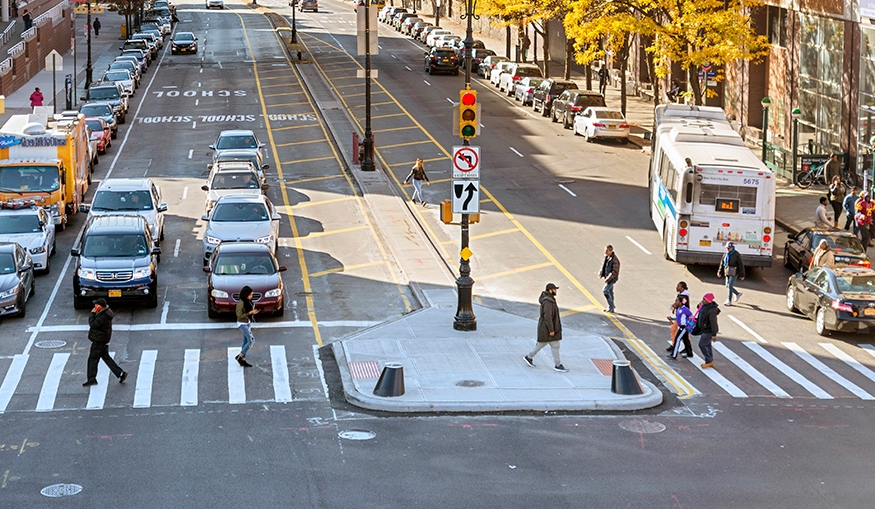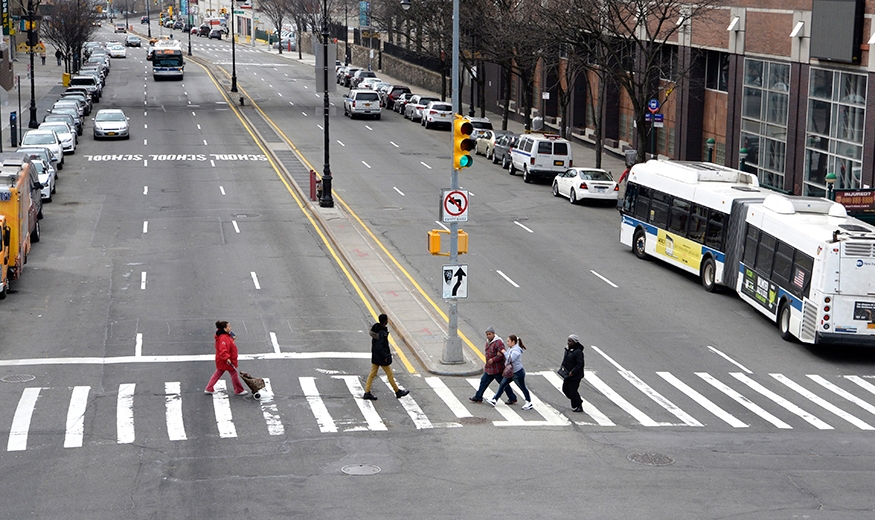Usage: Wide
Lane narrowings remove excess width from existing traffic lanes without changing the number of lanes. Lane removals, also known as "road diets," reassign underused traffic lanes to other functions. These design techniques, while not traffic calming devices, have powerful traffic calming benefits. Both may be accomplished by adding markings, turning lanes, pedestrian safety islands, expanded pedestrian space, on-street or separated bike lanes, parking, or other functions.

After DOT installed a "road diet" in 2016: Grand Concourse and E 149th Street, Bronx

Before DOT installed a "road diet" in 2016: Grand Concourse and E 149th Street, Bronx
Benefits
- Reduces opportunities for speeding and aggressive driving, thereby decreasing the severity and frequency of crashes
- Organizes the roadway to provide clearer instruction to drivers, cyclists, and pedestrians
- Provides space for pedestrian safety islands, assigned turn lanes, wide parking lanes, bus lanes, bike lanes, expanded sidewalks/pedestrian space, or other uses
Considerations
- Traffic conditions must be considered in planning lane removals; detailed analysis may be needed
- Commercial loading and other uses should be considered in planning lane narrowing
- Planned uses, such as bus lanes or bike lanes, should be taken into consideration
- Effects of narrowings on turning movements should be tested
Application
- Consider lane narrowings on corridors with excessively wide lanes
- Multi-lane corridors with excess capacity (more traffic lane capacity than traffic volume) are excellent candidates for lane removal
- Multi-lane corridors may be good candidates for lane removal in concert with other treatments, such as signal timing changes
- Lane narrowing and removal should be prioritized on corridors with safety or speeding concerns, or where prioritization of non-general traffic is desirable
Design
- Lane narrowings and removals should result in standard-width lanes
- When other treatments are included in a lane narrowing/ removal, see specific guidelines for those treatments

